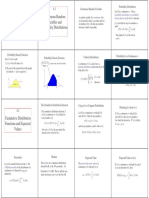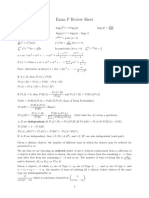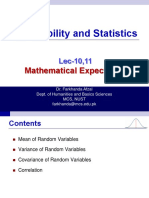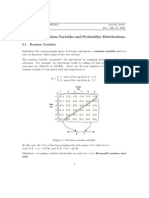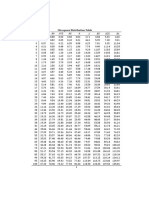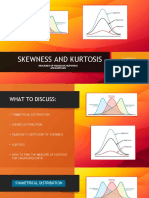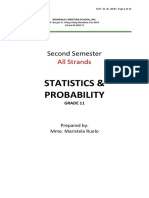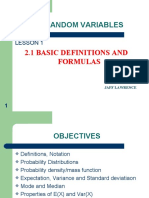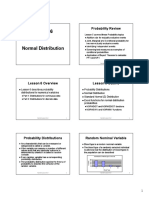0% found this document useful (0 votes)
16 views4 pagesChapter 3
Chapter 3 covers continuous distributions, defining key concepts such as probability density functions (pdf), cumulative distribution functions (cdf), expected value, and variance for continuous random variables. It also discusses specific distributions including uniform, exponential, chi-square, and normal distributions, detailing their properties and formulas. The chapter concludes with examples illustrating the application of these concepts in probability calculations.
Uploaded by
doris200904Copyright
© © All Rights Reserved
We take content rights seriously. If you suspect this is your content, claim it here.
Available Formats
Download as PDF, TXT or read online on Scribd
0% found this document useful (0 votes)
16 views4 pagesChapter 3
Chapter 3 covers continuous distributions, defining key concepts such as probability density functions (pdf), cumulative distribution functions (cdf), expected value, and variance for continuous random variables. It also discusses specific distributions including uniform, exponential, chi-square, and normal distributions, detailing their properties and formulas. The chapter concludes with examples illustrating the application of these concepts in probability calculations.
Uploaded by
doris200904Copyright
© © All Rights Reserved
We take content rights seriously. If you suspect this is your content, claim it here.
Available Formats
Download as PDF, TXT or read online on Scribd
/ 4








